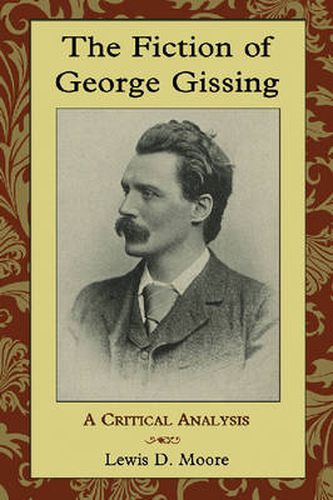Readings Newsletter
Become a Readings Member to make your shopping experience even easier.
Sign in or sign up for free!
You’re not far away from qualifying for FREE standard shipping within Australia
You’ve qualified for FREE standard shipping within Australia
The cart is loading…






This title is printed to order. This book may have been self-published. If so, we cannot guarantee the quality of the content. In the main most books will have gone through the editing process however some may not. We therefore suggest that you be aware of this before ordering this book. If in doubt check either the author or publisher’s details as we are unable to accept any returns unless they are faulty. Please contact us if you have any questions.
Most of George Gissing’s 23 novels have a certain air of autobiography, despite Gissing’s frequent arguments that his fictional plots bear little resemblance to his own life and experiences. Starting with Workers in the Dawn (1880), almost all of Gissing’s fictional works are set in his own time period of late - Victorian England, and five of his first six novels focus on the working-class poor that Gissing would have encountered frequently during his early writing career.While most recent criticism focuses on Gissing’s works as biographical narratives, this work approaches Gissing’s novels as purely imaginative works of art, giving him the benefit of the doubt regardless of how well his books seem to match up with the events of his own life. By analyzing important themes in his novels and recognizing the power of the artist’s imagination, especially through the critical works of Coleridge, Wordsworth, Shelley, and Keats, the author reveals how Gissing’s novels present a lived feel of the world Gissing knew firsthand. The author asserts that, at most, Gissing used his personal experiences as a starting point to transform his own life and thoughts into stories that explain the social, personal, and cultural significance of such experiences.
$9.00 standard shipping within Australia
FREE standard shipping within Australia for orders over $100.00
Express & International shipping calculated at checkout
This title is printed to order. This book may have been self-published. If so, we cannot guarantee the quality of the content. In the main most books will have gone through the editing process however some may not. We therefore suggest that you be aware of this before ordering this book. If in doubt check either the author or publisher’s details as we are unable to accept any returns unless they are faulty. Please contact us if you have any questions.
Most of George Gissing’s 23 novels have a certain air of autobiography, despite Gissing’s frequent arguments that his fictional plots bear little resemblance to his own life and experiences. Starting with Workers in the Dawn (1880), almost all of Gissing’s fictional works are set in his own time period of late - Victorian England, and five of his first six novels focus on the working-class poor that Gissing would have encountered frequently during his early writing career.While most recent criticism focuses on Gissing’s works as biographical narratives, this work approaches Gissing’s novels as purely imaginative works of art, giving him the benefit of the doubt regardless of how well his books seem to match up with the events of his own life. By analyzing important themes in his novels and recognizing the power of the artist’s imagination, especially through the critical works of Coleridge, Wordsworth, Shelley, and Keats, the author reveals how Gissing’s novels present a lived feel of the world Gissing knew firsthand. The author asserts that, at most, Gissing used his personal experiences as a starting point to transform his own life and thoughts into stories that explain the social, personal, and cultural significance of such experiences.